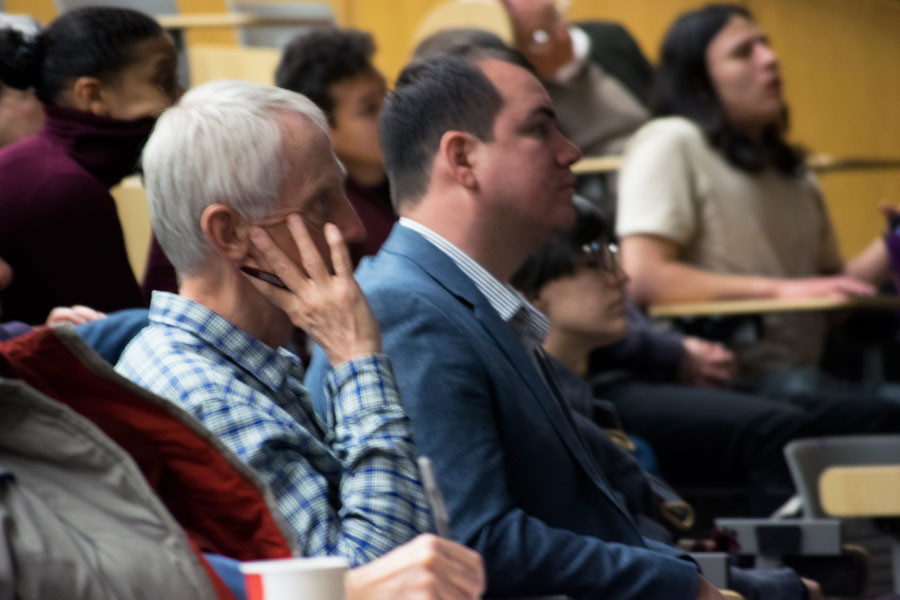NAISA reintroduces John Evans petition at historical trauma panel
Lauren Duquette/Daily Senior Staffer
Doug Medin, faculty advisor to the Native American and Indigenous Student Alliance, attends a panel on historical trauma within Native American communities. Medin and NAISA are pushing to have Northwestern founder John Evans’ name removed from campus buildings and faculty positions due to his involvement in a massacre of Native Americans.
January 8, 2016
The Native American and Indigenous Student Alliance reintroduced a petition to have John Evans’ name removed from campus buildings at a historical trauma panel Thursday.
The petition already sported over 300 signatures prior to the event hosted by One Book One Northwestern, said NAISA co-president Forrest Bruce. It was originally introduced in November during the second annual commemoration of the Sand Creek Massacre, which recognized the 151st anniversary of a brutal attack against a Cheyenne and Arapaho encampment by U.S. soldiers.
Although introducing the petition during the commemoration was appropriate because it linked the issue to its historical context, Bruce said, its timing just before Fall Quarter finals meant NAISA didn’t have as much time to publicize it before students left for break.
Bruce said the number of signatures is not as important to them as recognition from administration that having Evans’ name on University buildings and faculty positions is an issue worth addressing. However, he added, they are hoping to reach 1,000 signatures, but would “realistically be happy with 500.”
Administration officials currently hold differing views from the group on the controversy, including University President Morton Schapiro.
“I think sanitizing history is a mistake, I think taking people’s names off as if they never existed is a mistake and I think at an educational institution people should be educated,” Schapiro told The Daily in December. “I think the worst thing would be is you expunge names, so I think either you keep a name and tell honestly the history, good and bad, or you take off a name but say this used to be called (something else).”
Bruce said NAISA has been working with Bethany Hughes of NU’s Colloquium on Indigeneity and Native American Studies, a graduate student organization promoting conversation on American indigeneity and indigenous populations, to help write a more formalized letter he hopes will be more accessible for Schapiro and the rest of administration.
Despite resistance from administration to move forward with removing Evans’ name, NAISA will continue to collect signatures for the petition and already has more expansive plans in mind, said Doug Medin, a psychology professor and NAISA faculty adviser.
“I’m hoping that we’ll plan for what’s next at (Friday’s panel) discussion,” he said. “But another name that I’d like to also change is Sheridan Road, named after (Gen. Phillip Sheridan), who is famous for saying ‘The only good Indian I ever met is dead.’ As it turns out that, this would require a lot of levels of legislation.”
In reintroducing the petition at the panel, which featured faculty from other universities, Bruce said he hoped to use the speakers’ support to expand its reach.
“Having outside professors who are knowledgeable on the topic will give us some leverage as a source of credibility, because having Evans’ name on buildings is incredibly relevant to historical trauma,” Bruce said. “We’re hoping that these outside professors will bring the issue to the light a little more.”
Email: fathmarahman2019@u.northwestern.edu
Twitter: @fathma_rahman


